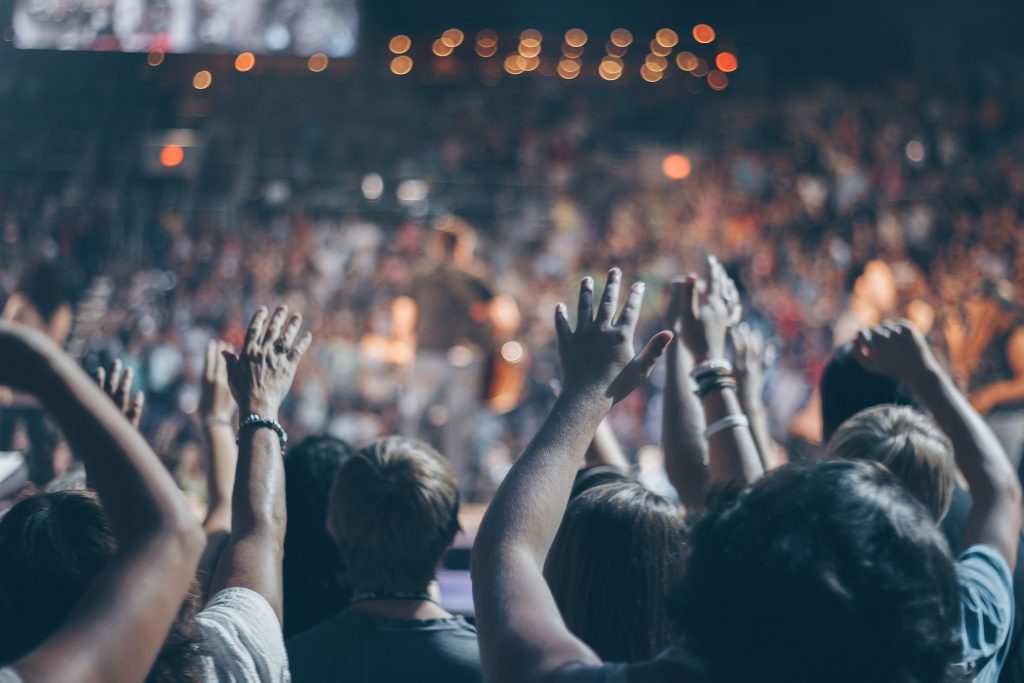 Many people find concerts, sporting events, and parades enjoyable. Being together with like-minded fans can be fun and exciting – but sometimes, it can also be dangerous.
Many people find concerts, sporting events, and parades enjoyable. Being together with like-minded fans can be fun and exciting – but sometimes, it can also be dangerous.
There are many reasons why crowds can become unruly, leading to injuries or even fatalities. It may be as simple as having too many people in a small space. For example, people leaving a stadium after the end of a sporting event can cause traffic jams as everyone heads to the same designated exits. There is also the possibility of a “mass craze” where people compete for a specific objective, like grabbing seats or the chance to meet a celebrity.
In recent years, stampedes and riots during “Black Friday” sales the day after Thanksgiving have become commonplace. Images on the nightly news of shoppers playing tug-a-war with the hottest new toy can be amusing, but laughter subsides when these arguments devolve into injuries or death. When a crowd moves en masse, people who are unable to keep up with the pace can fall and be stepped on or even crushed.
Unfortunately, terrorists and other criminals also take advantage of crowds to inflict violence. The shooting at the music event in Las Vegas in October 2017 is just one example of someone using the cover of noise and excitement to hide gunshots and to contain his victims in a closed area.
This brings us to the question of liability – who is responsible if you, or a loved one, is injured by a crowd?
Accidents involving crowds can sometimes be considered under the legal idea called “premises liability.” This means that the person who owns the property on which the injury occurred is responsible for keeping the property reasonably safe for visitors. In 1995, the United States Supreme Court ruled in the case Roth v. Costa that an owner of a concert hall owed a concert attendee the duty to exercise “reasonable care” to protect them from a foreseeable injury.
To be successful in a lawsuit, the injured victim has to prove three elements. First, the victim has to show that he actually suffered an injury. This can be easily demonstrated with evidence like medical records, testimony from witnesses, and photographs. Second, the victim must show that there was a hazardous condition on the premises that caused the injury. Again, photographs of the scene are an important piece of evidence. Finally, the victim must show that an owner, manager, or employee of the property was negligent in their duty to maintain the premises in a safe manner. Negligence is a key part of this kind of case.
A way that someone can show that the premises owner was negligent is by establishing that the location, such as a stadium, did not provide appropriate security, lighting, or crowd control.
Another important factor is what category of visitor the injured person is considered under the law. There are generally four different labels that may apply: invitee, social guest, licensee, or trespasser. An invitee is a person who is actually invited onto the property, like a store’s customer. This classification usually implies that the property owner/possessor took reasonable steps to ensure the premises’ safety. A social guest is just what is sounds like – a guest welcomed by the owner to the property. A licensee is someone who enters a property for his or her own purpose, or as a guest, and has the owner’s consent. Finally, a trespasser is someone who comes onto the property without the right or permission to do so.
When the court has to decide if an owner or possessor of the property was “reasonable,” it considers factors such as:
- How and/or why the visitor came onto the property;
- The ability to foresee (or anticipate) the accident or injury that actually happened;
- How and why the property is being used; and
- The reasonableness of the owner’s effort to try to warn visitors of the potentially dangerous condition.
If you are hurt at a public gathering, it is important to act quickly to preserve evidence to build your case. Some examples of good evidence to obtain can include:
- Video (filmed on your smartphone, for instance) of the crowd conditions right after the injury;
- Photographs of the surrounding scene and resulting injuries;
- Contact information of witnesses; and
- Notes from witnesses (it is best to jot down notes from witnesses while still at the scene, if possible, since memories are notoriously unreliable).
If you, or a loved one, were injured on property owned by others due to overcrowding, you should seek medical attention immediately and contact a knowledgeable Dallas personal injury attorney, who will be your advocate to help you receive the compensation that you deserve. Please contact Crowe Arnold & Majors, LLP at (214) 231-0555 for a free case evaluation.





